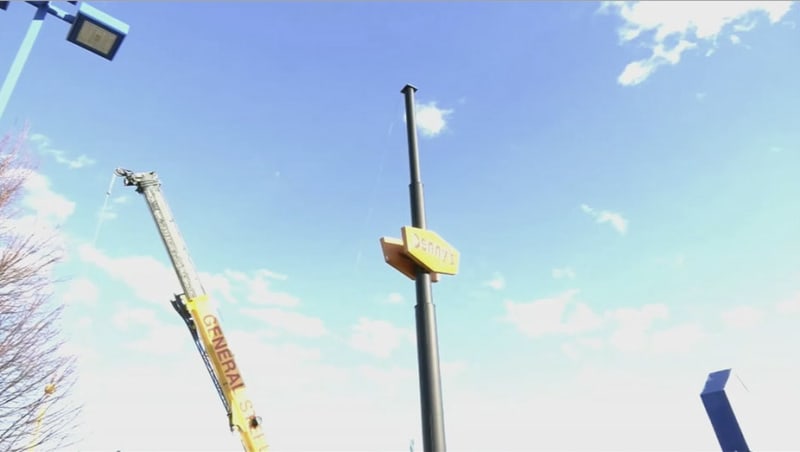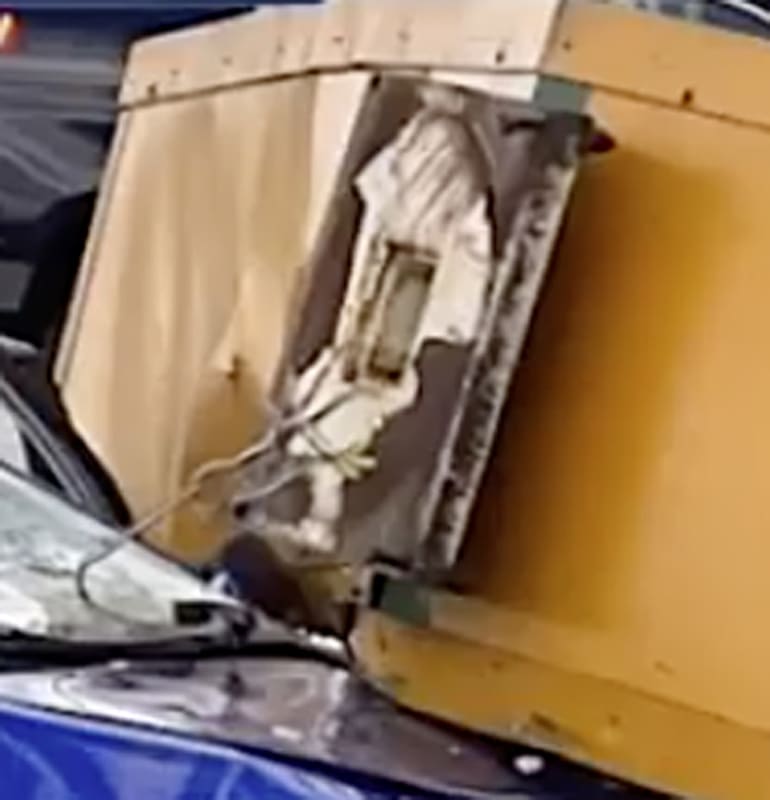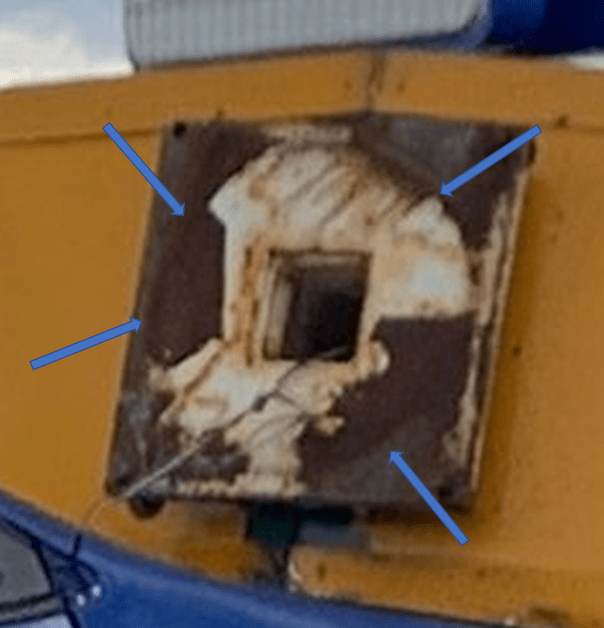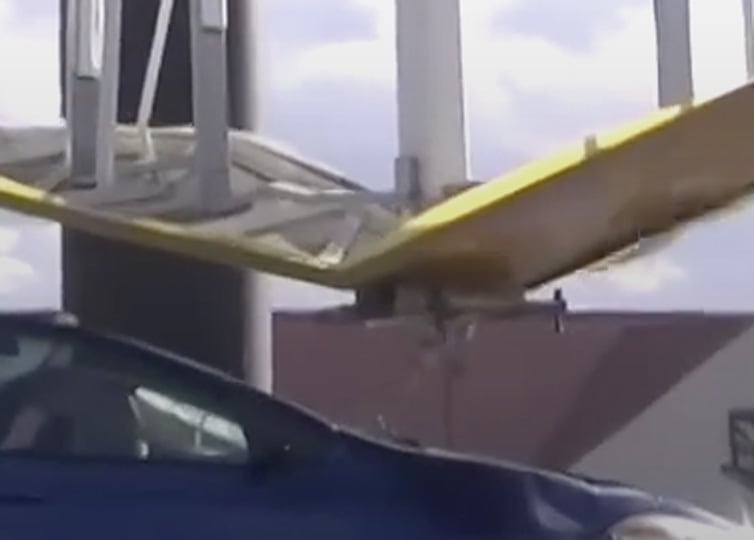"The circle is where it was welded to the column."
But it wasn't welded to the column. It was bolted. To the other steel plate that probably WAS welded to the column.
There are two square steel plates. One is at the bottom of the sign. The other is at the top of the pole. The sign is placed on top of the pole with a crane, and the bolts are inserted and tightened.
The plate that "was welded to the column" is still on the top of the pole.
The one we are examining is attached to the remainder of the sign by passing a square section tube through a matching square section hole. THAT was most likely welded, but it wouldn't make the described circular marking out on the edge.
The "artifact" might be the result of welding done on the top of the plate. There might be additional pieces between the square steel plate and the yellow part of the sign, to spread the load. I would be very wary of using only the (nominal) 6" square tube inserted through the hole in the (nominal) 2" thick plate to transfer loads.
In the picture below, you can see a sort of spacer between the plate and the yellow part of the sign. But it DOES appear to be square, not round. Additionally, you can see one of the bolts still in place:
spsalso




